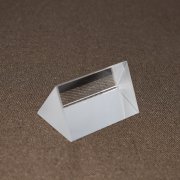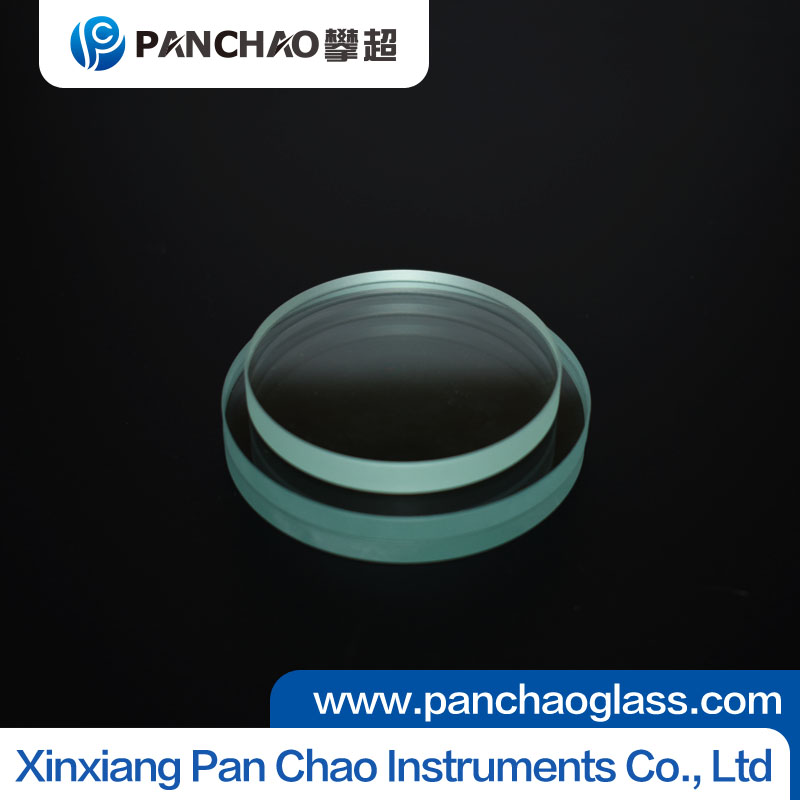
Borosilicate glass comprehensive introduction
PCHAO brand industrial sight glass give you professional custom!
Website:www.panchaoglass.com
Address:Room 1624, Jing Ye Gong Yuan Guo Ji, Jin Sui road and New Second Street intersection, Xin Xiang city, Henan Province, China
Phone: +8613569413718
International Standard ISO 4802. 1 - 1988 "Water Resistance of Glassware, Inner Surface of Glass Containers Part 1: Determination and Classification by Titration" Borosilicate glass (including neutral glass) is defined as containing boron trioxide (B 2O-3) 5 to 13% (m / m) of glass, but ISO 12775, published in 1997, "Classification of glass components in normal mass production and their test methods" defines borosilicate glass (including neutral glass) Boron trioxide (B-2O-3) is greater than 8% (m / m). According to the 1997 international standard on the principle of glass classification, China's pharmaceutical glass bottle industry has been widely used over the years B-2O-3 6% (m / m) of the glass material should not be called borosilicate glass or neutral glass. Tests show that the water resistance of these materials and the water resistance of the inner surface of the test are less than 1 and HC1 level, or between the level of 1 and 2. Practice has also proved that the use of such glass in the middle there will be a neutral failure or off the phenomenon, but this type of glass in China has been produced for many years, the new standard to retain the material of the glass and specify its B-2O- 3 content should meet the requirements of 5 - 8% (m / m), clearly defined such glass can not be called borosilicate glass (or neutral glass), and its name is low borosilicate glass.
Glass Material Type: There are four kinds of glass types in the new standard, including 2 kinds of borosilicate glass, including 3. 3 borosilicate glass [α = (3. 3 ± 0.1) × 10 (-6) K (- 1) ] And 5. 0 neutral glass [α = (4 ~ 5) × 10 (-6) K (-1)], low borosilicate glass [α = (6. 2 ~ 7.5) × 10 (-6 ) K (-1)] 1, soda-lime glass [α = (7. 6 ~ 9.0) × 10 (-6) K (-1)] l, so there are four kinds of glass types according to the material.
Borosilicate glass classification
1, low alkali borosilicate glass: refers to SiO2-B2O3-R2O components, containing low R2O, SiO2 high glass, linear expansion coefficient is small, small dispersion, good chemical stability, high thermal stability, good electrical insulation, used as Previous glass (eg Pyrex), heat-resistant cookers, ampoules glass, neutral glass, electric vacuum glass, optical glass, LCD substrate, solar panels and heaters.
2, alkaline earth borosilicate glass: refers to SiO2-B2O3-RO components, such as SiO2-B2O3-PbO components, the use of the preparation of optical glass, low temperature glaze; SiO2-B2O3-PbO / ZnO components for crystalline powder solder for cathode ray Tube (CRT) sealing; SiO2-B2O3-ZnO components, for rectifier, electronic device passivation.
3, lanthanum borosilicate glass: refers to SiO2-B2O3-La2O3-RmOn components, such as SiO2-B2O3-La2O3-CaO-ZnO-ZrO2 components with high refractive index, low dispersion, chemical temperature is better, Used as an optical glass.
4, rare earth doped borosilicate glass: SiO2-B2O3-RmOn as the basis component, doped Pr, Nd laser glass, doped Au, Ag, Cu nonlinear optical glass, mixed CdS, ZnS: Mn nanocrystalline Of the luminous glass. In the case of
Float glass forming process technology is the melting furnace, clarified, homogenized glass liquid, high temperature in the tin bath floating in the molten tin liquid surface, the use of molten glass surface tension, glass and tin liquid between the surface Tension, glass of gravity together to complete the glass liquid leveling, thinning, polishing, cooling, solid and other processes, making it better than polished glass of high quality flat glass. The factors that determine the effect of float glass formation are glass viscosity, surface tension and self-gravity. In these three factors, the glass viscosity mainly from the role of glass stereotypes, glass surface tension mainly from the role of glass polishing, glass gravity is mainly from the role of glass flattening, the three of the glass liquid leveling, polishing And thinning have a certain role, combined with each other in order to carry out the production of float glass.
If you are interested in the high borosilicate glass or need to consult, please click on our online customer service, or call us. Pan Chao, customized different quality specifications of the glass.
Pan Chao special industrial glass, tailored for your different quality of the glass.
Welcome sending your inquiry: Phone : +86 13569413718 Email: info@panchaoglass.com
Glass Material Type: There are four kinds of glass types in the new standard, including 2 kinds of borosilicate glass, including 3. 3 borosilicate glass [α = (3. 3 ± 0.1) × 10 (-6) K (- 1) ] And 5. 0 neutral glass [α = (4 ~ 5) × 10 (-6) K (-1)], low borosilicate glass [α = (6. 2 ~ 7.5) × 10 (-6 ) K (-1)] 1, soda-lime glass [α = (7. 6 ~ 9.0) × 10 (-6) K (-1)] l, so there are four kinds of glass types according to the material.
Borosilicate glass classification
1, low alkali borosilicate glass: refers to SiO2-B2O3-R2O components, containing low R2O, SiO2 high glass, linear expansion coefficient is small, small dispersion, good chemical stability, high thermal stability, good electrical insulation, used as Previous glass (eg Pyrex), heat-resistant cookers, ampoules glass, neutral glass, electric vacuum glass, optical glass, LCD substrate, solar panels and heaters.
2, alkaline earth borosilicate glass: refers to SiO2-B2O3-RO components, such as SiO2-B2O3-PbO components, the use of the preparation of optical glass, low temperature glaze; SiO2-B2O3-PbO / ZnO components for crystalline powder solder for cathode ray Tube (CRT) sealing; SiO2-B2O3-ZnO components, for rectifier, electronic device passivation.
3, lanthanum borosilicate glass: refers to SiO2-B2O3-La2O3-RmOn components, such as SiO2-B2O3-La2O3-CaO-ZnO-ZrO2 components with high refractive index, low dispersion, chemical temperature is better, Used as an optical glass.
4, rare earth doped borosilicate glass: SiO2-B2O3-RmOn as the basis component, doped Pr, Nd laser glass, doped Au, Ag, Cu nonlinear optical glass, mixed CdS, ZnS: Mn nanocrystalline Of the luminous glass. In the case of
Float glass forming process technology is the melting furnace, clarified, homogenized glass liquid, high temperature in the tin bath floating in the molten tin liquid surface, the use of molten glass surface tension, glass and tin liquid between the surface Tension, glass of gravity together to complete the glass liquid leveling, thinning, polishing, cooling, solid and other processes, making it better than polished glass of high quality flat glass. The factors that determine the effect of float glass formation are glass viscosity, surface tension and self-gravity. In these three factors, the glass viscosity mainly from the role of glass stereotypes, glass surface tension mainly from the role of glass polishing, glass gravity is mainly from the role of glass flattening, the three of the glass liquid leveling, polishing And thinning have a certain role, combined with each other in order to carry out the production of float glass.
If you are interested in the high borosilicate glass or need to consult, please click on our online customer service, or call us. Pan Chao, customized different quality specifications of the glass.
Pan Chao special industrial glass, tailored for your different quality of the glass.
Welcome sending your inquiry: Phone : +86 13569413718 Email: info@panchaoglass.com
Related articles
- What are the advantages of high borosilicate glass water cups
- high borosilicate custom logo glass extracter tube glass test
- Customized borosilicate thread glass tube
- The difference between high borosilicate glass,low borosilica
- Introduction and product performance of high borosilicate fir
- Comparison between quartz glass and borosilicate sight glass
- Advantages of borosilicate glass
- The application of high borosilicate glass
- Two key factors affecting the relative density of high borosi
- Optical application of high borosilicate glass
Products
acrylic display center
Contact Us

Xinxiang Pan Chao Instruments Co., Ltd.
Tel: +86 13343800331
Contact person:Carrie Niu
Fax: 0373 303 0331
Email:sales@panchaoglass.com






